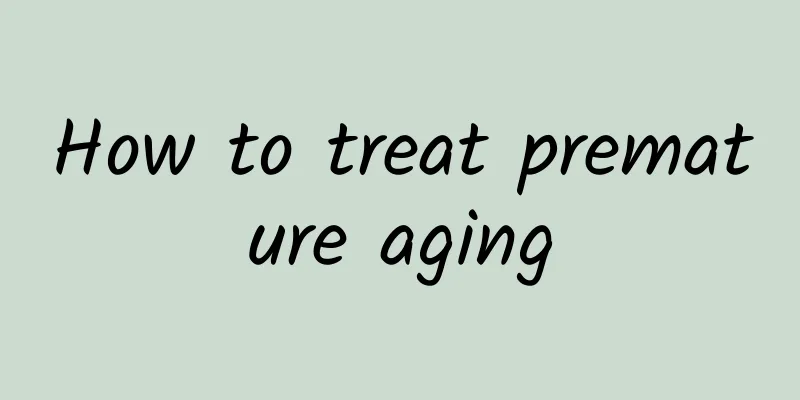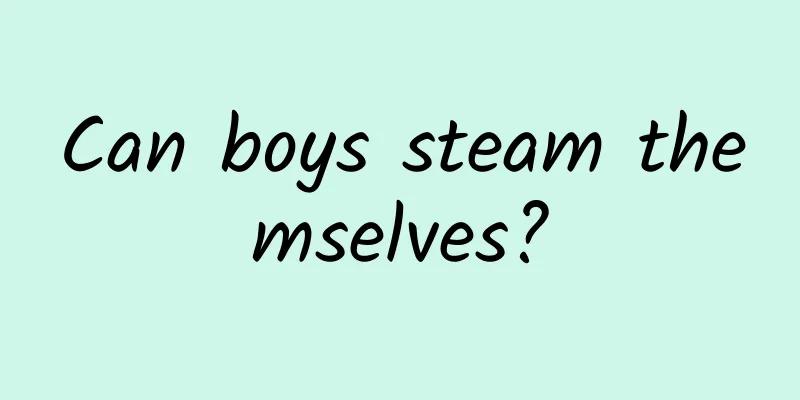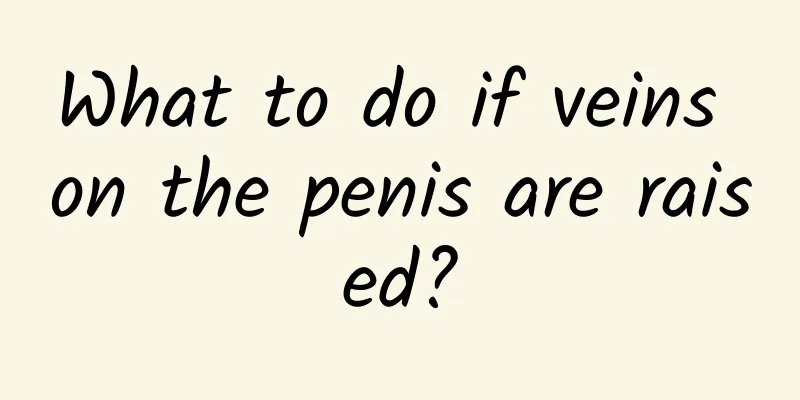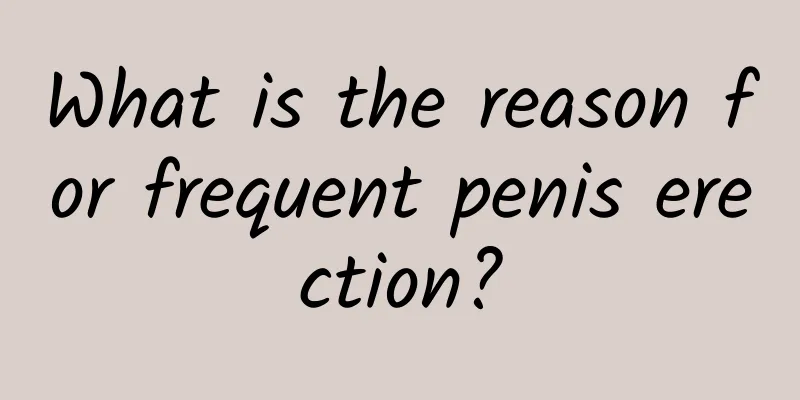Does prostatitis cause testicular pain?
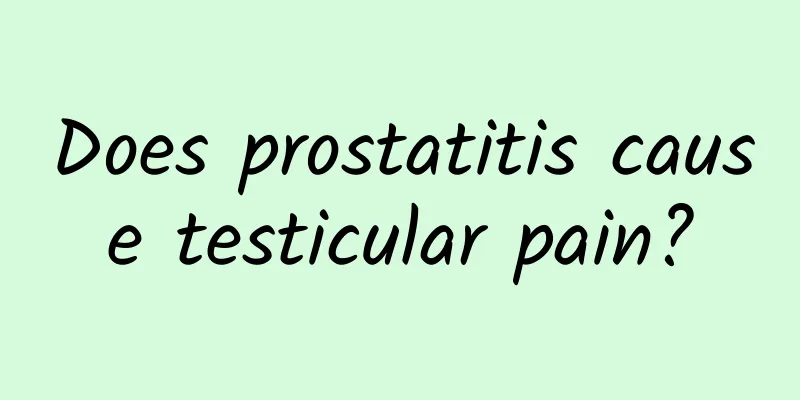
|
The most common disease for middle-aged and elderly men is prostatitis, which can cause symptoms such as frequent urination and urgency, and has a great impact, so it needs to be treated as soon as possible. Therefore, it is necessary for male friends to understand its signs so that they can detect it in time and treat it as soon as possible. So, does prostatitis cause testicular pain? Pain is a typical symptom of prostatitis. Once discovered, antibacterial, anti-inflammatory, and analgesic treatments are needed. What are the symptoms of prostatitis? 1. Testicular pain is a common disease in men's medicine. When testicular pain occurs, symptoms such as frequent urination, urgent urination, and painful urination will also occur. At this time, it is necessary to rule out whether there is prostatitis. Prostatitis can cause testicular pain, which will mostly cause a bloating sensation in the genitals, and can also cause symptoms such as frequent urination, urgent urination, and painful urination. In addition to testicular pain, there will also be local symptoms, causing sexual dysfunction. 2. Because the prostate nerve distribution is relatively wide, the nerves that control the testicles, scrotum, perineum, and lumbosacral region are connected to the prostate. Once the prostate becomes inflamed, the areas where the prostate-related nerves are distributed will be affected, causing radiating pain in the testicles or other organs. Therefore, testicular pain is a manifestation of prostatitis. 3. There are many causes of testicular pain. Not all testicular pain is caused by prostatitis. For example, infection, trauma, tumor and other factors may cause testicular pain. Therefore, when testicular pain occurs, it is best to go to the hospital for a detailed examination to clarify the cause. Prostatitis can affect men's normal life and work, causing swelling and pain in the testicles and perineum, and treatment measures need to be taken as soon as possible. How to treat prostatitis 1. Antibacterial treatment: Use a double-balloon catheter to block the prostatic urethra, and inject antibiotic solution from the urethral cavity and flow it back into the prostatic duct to achieve the treatment goal. 2. Anti-inflammatory and analgesic drugs: Non-steroidal anti-inflammatory drugs can improve symptoms. Generally, indomethacin is taken orally or in suppositories. Chinese medicine also has certain effects in using anti-inflammatory, heat-clearing, detoxifying and hard-removing drugs. Allopurinol can reduce the concentration of uric acid in the whole body and prostatic fluid. Theoretically, as a free radical scavenger, it can also remove active oxygen components, reduce inflammation and relieve pain. It is an optional auxiliary treatment method. 3. Physical therapy: Prostate massage can empty the concentrated secretions in the prostate duct and drain the infection focus in the obstructed area of the gland. Therefore, for stubborn cases, prostate massage can be performed every 3-7 days while using antibiotics. A variety of physical factors are used for prostate physical therapy, such as microwave, radio frequency, ultrashort wave, medium wave and hot water bath, which are beneficial for relaxing the prostate, posterior urethral smooth muscle and pelvic floor muscle, enhancing antibacterial efficacy and relieving pain symptoms. 4. α-receptor antagonists: The tension of the prostate, bladder neck and urethral smooth muscles of patients with prostatitis, bacterial or non-bacterial prostatitis is increased. During urination, the increased pressure in the posterior urethra causes urine to flow back into the prostatic duct, which is an important cause of prostatitis, prostatic stones and bacterial prostatitis. The use of α-receptor antagonists can effectively improve prostatitis and urination symptoms, which is of great significance for preventing recurrence of infection. 5. Surgical treatment: Surgical treatment can be used for recurrent chronic bacterial prostatitis. Prostatectomy can achieve the goal of cure, but it should be used with caution. Since prostatitis usually affects the peripheral zone of the gland, transurethral resection of the prostate (TURP) is difficult to achieve the purpose of treatment. TURP can remove prostate stones and bacterial infection lesions near the prostate duct, which is beneficial to reduce the reinfection of peripheral zone lesions. Chronic bacterial prostatitis can lead to recurrent urinary tract infections and infertility. Prostatitis has a relatively large impact and is more harmful to men. It is currently a common disease among men, and more and more young men also have prostatitis. Therefore, everyone must do relevant prevention to prevent the occurrence of prostatitis and avoid recurring attacks of the disease, which will affect their quality of life. |
<<: Can Chinese medicine cure prostatitis?
>>: Small granules grow on the edge of the glans
Recommend
Men exude this fluid when they are overworked
As the saying goes, "When semen is full, it ...
How to quickly reduce glans edema
The glans penis is an important part of the male ...
Why is a man's urine yellow?
In daily life, for men, if they find that their u...
With these tips, you no longer have to worry about not being able to choose good pork liver
Pork liver is a delicacy that many people love to...
What to do if men have pain on both sides of their lower abdomen
As we know, some men may have pain in the lower a...
The more mature a man is, the smaller this part is.
Core Tip: As time goes by, the upper eyelids of p...
Analysis of the reasons why men do not ejaculate
There are many factors that cause men to not ejac...
What to do if there are small bumps in the testicles
Small bumps are a common phenomenon of skin infec...
What is Mycoplasma sperm infection?
Chlamydia is a type of prokaryotic organism that ...
How long does it take to treat varicose veins?
The penis is related to male fertility, so when t...
How to measure men's chest circumference
Many people know that if you want to sell clothes...
How many days does it take to heal after circumcision?
Many men with prepuce that is too long or too lon...
The man is hot but not feverish
Some men have very hot bodies but do not have a f...
Will patients with depression have sequelae after recovery?
Depression is a very mentally tormenting disease....
What to drink when you stay up late? Three kinds of tea are more suitable for those who stay up late
Chrysanthemum tea http://www.cndzys.com/yinshi/nin...


